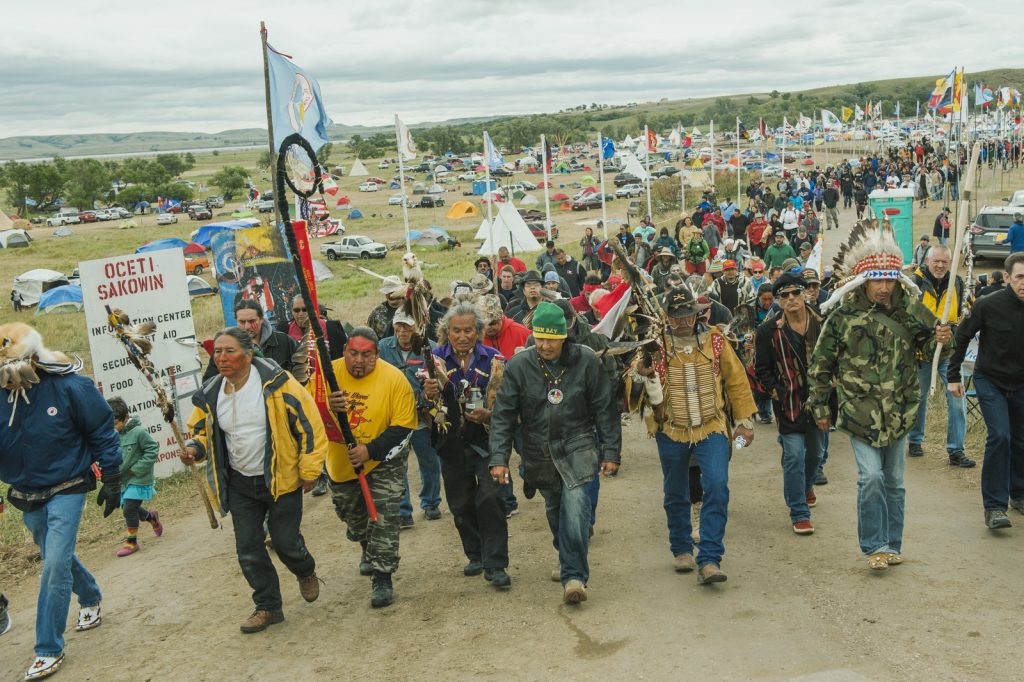Laws are made to regulate interactions between and among people and governments.
Laws are made to codify systems of behavior that are beneficial.
Laws are made to express the social contract that is presumed to exist between governor and governed.
Laws are made to prevent bad outcomes or promote good ones.
Laws are made to be broken is an often heard “smart-alecky” remark, akin to the Armenian saying “necessity dissolves the law.”

A scene from the Standing Rock Pipeline Protest In North Dakota (Photo: Andrew Cullen/Reuteres)
Most people agree that “the law”—as somewhat grandiosely referenced—is a good thing.
But what happens when the law starts to become a problem or the source of problems? f course it can be changed, but those actually making/formulating the laws must agree that it should be changed. We are constantly witness to situations where there is insufficient support for changing laws, frustrating many who would like to see those changes implemented.
And, it gets much worse in a dictatorial system of government where one person or a very few people can change or not change laws based on their whims.
But perhaps the worst is when laws, legitimately enacted and (initially) enjoying broad support, become tools in the hands of governments or affiliated elites to oppress citizens or hide their corruption and misdeeds.
How then to proceed?
There is of course a fairly well established tradition of civil disobedience and other forms of citizen action. But what if these approaches make no headway. What sectors of society end up controlling government to the detriment of other sectors of society?
How long must people bear the abuse, beatings, corruption, degradation, exile, fear, graft, harassment, impoverishment, jailing, kleptocracy, lying, misgovernment, nepotism, ostracism, payoffs, quid-pro-quos, rapaciousness, stress, torture, unfairness, vices, etc. imposed by a government and its cronies?
When is the time to shift from the actions that saved Mashdots Park to actions such as those taken by the self-anointed “Sasna Tsrer”? When should the native American protesters at Standing Rock respond with violence to dogs unleashed to bite and harass them? When does the “small steps” or “incremental reform” approach to improving our societies become insufficient?
A line from Victor Hugo seems to provide the answer: “When dictatorship is a fact, revolution becomes a right.”
But then how do we establish that fact? Where is the line to be drawn between acceptable and acceptable use of the law? When should the line between peaceful and violent, bloody, revolution be crossed? Who should bear the responsibility of keeping society away from these dangerous lines?
What should we as Diasporans be doing with respect to Armenia’s governance issues and the similar problems posed in the host societies where we reside? Who should be thinking and speaking to these issues? Scholars? Average citizens? Activists? Where do you stand?
Start determining where your lines are lest the law lead all of us to lose our liberties.
Source: Armenian Weekly
Link: The Law and the Line